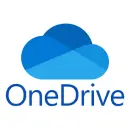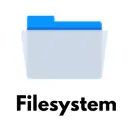

CloudM Migrate
File migrations to Google Drive
File migrations to Google Drive
Fast, seamless and secure file migrations to Google Drive from over 15 source platforms.
Get StartedTrusted by over 40,000 customers worldwide




Migrate files from multiple source platforms to Google Drive
When performing a file migration to Google Drive with CloudM, all of the files within the specified folder will be migrated into the user’s Google Drive. Various choices are available as to how folders are migrated: files and folders can be migrated to the same folder structure as the file system; files can be migrating into a single collection; a combination of both can be done, or no structure at all can be applied.

One Drive For Business
Looking to migrate your files and folders from OneDrive to Google Drive? CloudM can migrate all your files and folders from OneDrive directly into Google Drive, keeping your folder hierarchies and maintaining any Access Control Lists. Files may be selected on file type, and empty folders can also be migrated.

Google Drive
CloudM makes moving your files and folders between Google Drive and shared drives easy. Migrate both files and folders from Google Drive and shared drives directly into your new Google Drive. Keep folder hierarchies and maintain any access control lists. Files may be selected on file type, and empty folders can also be migrated.

Dropbox
Need to move files from Dropbox to Google Drive? Migrate your files and folders from Dropbox directly into Google Drive using CloudM, whilst maintaining folder hierarchies and maintaining access control lists.

Microsoft File System
On-premise file migrations to Google Drive. Migrate both files and folders from on premise file systems directly into Google Workspace and Google Drive. Keep folder hierarchies and maintain any access control lists.

Box
Box file migration to Google Drive. CloudM makes moving your files from Box into Google Workspace and Google Drive seamless. Migrate files and folders from Box directly into Google Drive. Keep folder hierarchies and maintain any access control lists.

Sharepoint
Looking to migrate sharepoint files to Google Workspace and Google Drive? Migrate SharePoint to Google Drive seamlessly using CloudM. Move all your files and folders from SharePoint directly into Google Drive whilst keeping your folder hierarchies and maintain any Access Control Lists.
Migration features for migrating files and folders to Google Drive
When performing a file migration to Google Drive with CloudM, all of the files within the specified folder will be migrated into the user’s Google Drive. Various choices are available as to how folders are migrated: files and folders can be migrated to the same folder structure as the file system; files can be migrating into a single collection; a combination of both can be done, or no structure at all can be applied.
Source specific migration features for migrating files and folders to Google Drive
| Migration Details | OneDrive | Google Drive | DropBox | Microsoft File System | Box | Sharepoint |
|---|---|---|---|---|---|---|
| Folder Hierarchies and Files: Folder hierarchies from the source file system are recreated in the destination | check | check | check | check | check | check |
| Folder and Files ACLS: Option enables File system Access Control Lists to be migrated | check | check | check | check | check | check |
| File Type Filters: Files may be selectively migrated depending on file type and created date | check | check | check | check | check | |
| Copy Empty Folders: Folders empty of any files are migrated | check | check | check | check | check |
Ready to Get Started?
CloudM Migrate Key Features
-
Free pre-migration scan
-
Built in reporting
-
Migration scheduling
-
High speed migrations
-
15+ source platforms supported
-
Flexible migration options
-

Unique environment scan, performing analysis of your source environment and reporting key statistics such as item counts, data volume, permissions and folder depth. Performing an environment scan pre-migration will enables us to foresee any issue that may arise during the file migration to Google Drive.
-

Access in depth audit, migration trace and migration service logs for your file migration to Google Drive to help quickly diagnose issues and errors. Remotely connect to secondary servers directly from CloudM to quickly resolve errors.
-

Use Powershell scripts to control access and automate processes, making it easy to quickly change configurations during your file migration to Google Drive.
-

Speed up your file migration to Google Drive by using multiple servers with CloudM. Adding more secondary servers allows more item threads to be migrated simultaneously.
-

Covering emails, calendars, files and archives, the CloudM migration tool moves data from over 15 different source platforms. The source platforms for performing file migrations to Google Drive include Microsoft OneDrive, Google Drive, DropBox, Microsoft File Systems, Box and Microsoft Sharepoint.
-

When performing your file migration to Google Drive choose from the SaaS version of CloudM, or download a self-hosted version to maintain the data in your own environment.
Deployment options for CloudM Migrate
CloudM Migrate SaaS
The SaaS version of CloudM. With no set-up required and needing less technical knowledge to run, this is the ideal solution for less complex migrations.
CloudM Migrate Self Hosted
The downloadable version of CloudM. Ideal for large and complex migrations. Setup the product and use our desktop or browser-based interface to complete your migration.
The CloudM team are with you every step of the way
Interested in performing fie migrations to Google Drive?















